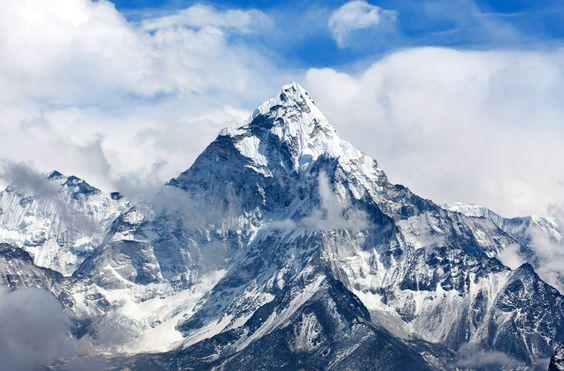Highest Height in the World
The highest heights on Earth and beyond are remarkable not only for their sheer scale but also for what they represent. Whether it’s the towering peaks of our planet’s mountains, the monumental skyscrapers we build, or the far reaches of space, these heights capture human imagination and achievement. This article offers a detailed exploration of these heights, from natural elevations to man-made structures and space-based points, highlighting their significance and the challenges associated with reaching them.
The Highest Natural Heights on Earth
Natural heights are measured from sea level and showcase the planet’s geological features. These towering peaks are the highest points on Earth and represent significant achievements in mountaineering and exploration.
Mount Everest
Height: 8,848.86 meters (29,031.7 feet)
Location: Border of Nepal and the Tibet Autonomous Region of China
Mount Everest is the highest point on Earth, standing at 8,848.86 meters above sea level. It is renowned for its challenging climbing conditions and its status as the ultimate mountaineering goal. Read about Tallest God in the World
Details:
- First Ascent: Sir Edmund Hillary and Tenzing Norgay reached the summit on May 29, 1953.
- Geological Formation: Part of the Himalayas, formed by the collision of the Indian and Eurasian tectonic plates.
- Climbing Challenges: Extreme cold, low oxygen levels, and unpredictable weather conditions make climbing Everest a significant challenge.
Kangchenjunga
Height: 8,586 meters (28,169 feet)
Location: Border of Nepal and India
Kangchenjunga is the second-highest mountain in the world and is known for its stunning beauty and challenging climbs. Its name translates to “The Five Treasures of Snow,” reflecting its five prominent peaks.
Details:
- First Ascent: Joe Brown and George Band reached the summit on May 25, 1955.
- Cultural Significance: Kangchenjunga is considered sacred by the local communities in Nepal and Sikkim, India.
Lhotse
Height: 8,516 meters (27,940 feet)
Location: Border of Tibet and Nepal, near Mount Everest
Lhotse, located near Everest, is the fourth-highest mountain in the world. It is known for its steep slopes and challenging climbing conditions, making it a formidable peak.
Details:
- First Ascent: Fritz Luchsinger and Ernst Reiss reached the summit on May 18, 1956.
- Climbing Challenges: Lhotse’s high elevation and severe weather conditions make it a difficult climb, often undertaken by experienced mountaineers.
Makalu
Height: 8,485 meters (27,838 feet)
Location: Border of Nepal and Tibet
Makalu is the fifth-highest mountain in the world, recognized for its pyramid-like shape and difficult climbing conditions. Its rugged terrain and high altitude make it a challenging ascent.
Details:
- First Ascent: Lionel Terray and Jean Couzy reached the summit on May 15, 1955.
- Climbing Challenges: The mountain’s steep slopes and harsh weather conditions add to the difficulty of climbing Makalu.
The Tallest Man-Made Structures
Human engineering has reached impressive heights with the construction of skyscrapers and other monumental structures. These achievements reflect advances in technology and architectural design.
Burj Khalifa
Height: 828 meters (2,717 feet)
Location: Dubai, United Arab Emirates
The Burj Khalifa is the tallest man-made structure in the world. Its height and innovative design make it a symbol of modern architecture and engineering excellence.
Details:
- Construction Completed: January 4, 2010
- Features: The building includes luxury residences, corporate offices, and a hotel. It also features an observation deck on the 148th floor, offering panoramic views of Dubai.
Shanghai Tower
Height: 632 meters (2,073 feet)
Location: Shanghai, China
The Shanghai Tower ranks as the second tallest building in the world. Its design incorporates a unique spiral shape, which enhances its structural stability and energy efficiency.
Details:
- Construction Completed: September 2015
- Features: The tower includes office spaces, a hotel, and observation decks. Its spiral design helps reduce wind loads and improve aerodynamics.
Abraj Al-Bait Clock Tower
Height: 601 meters (1,971 feet)
Location: Mecca, Saudi Arabia
The Abraj Al-Bait Clock Tower is a prominent landmark in Mecca, known for having the world’s largest clock face. It is part of a larger complex that serves millions of pilgrims each year.
Details:
- Construction Completed: 2012
- Features: The building houses a luxury hotel, shopping mall, and prayer rooms, making it a key facility for those participating in the Hajj pilgrimage.
Ping An Finance Centre
Height: 599 meters (1,965 feet)
Location: Shenzhen, China
The Ping An Finance Centre is one of the tallest buildings in the world, known for its sleek design and multifunctional use, including office spaces, a hotel, and an observation deck.
Details:
- Construction Completed: 2017
- Features: The tower includes office floors, a luxury hotel, and retail spaces, reflecting contemporary architectural trends.
The Highest Points in Space
When discussing the highest points in space, we consider structures and locations that far exceed the tallest buildings on Earth. These include space stations and satellites that orbit at extreme distances from our planet.
International Space Station
Height: Approximately 400 kilometers (250 miles) above Earth
The International Space Station (ISS) orbits Earth at an altitude of approximately 400 kilometers, making it one of the highest human-made structures in space.
Details:
- First Module Launched: November 20, 1998
- Purpose: The ISS serves as a space environment research laboratory where scientific research is conducted in microgravity.
Geostationary Satellites
Height: Approximately 35,786 kilometers (22,236 miles) above Earth
Geostationary satellites orbit Earth at a height of about 35,786 kilometers. This position allows them to remain fixed relative to a specific point on the Earth’s surface, facilitating constant communication and monitoring.
Details:
- Purpose: These satellites are essential for telecommunications, broadcasting, and weather monitoring.
Comparing Natural and Artificial Heights
Comparing natural and artificial heights offers insight into the extremes of Earth’s terrain and human engineering capabilities. Each type of height—whether natural or man-made—represents significant achievements and challenges in its respective field.

Natural Heights
- Mount Everest: The highest point on Earth, representing extreme natural elevation.
- Kangchenjunga: The second-highest mountain, notable for its challenging climbs and cultural significance.
- Lhotse: Close to Everest, known for its difficult climbing conditions.
- Makalu: Famous for its pyramid shape and tough climbing conditions.
Artificial Heights
- Burj Khalifa: The tallest man-made structure, showcasing modern architectural and engineering achievements.
- Shanghai Tower: Known for its spiraling design and height, reflecting advances in skyscraper construction.
- Abraj Al-Bait Clock Tower: Features the largest clock face and is a significant landmark in Mecca.
- Ping An Finance Centre: A major skyscraper in Shenzhen, highlighting contemporary architectural innovations.
Conclusion
The pursuit of reaching and understanding the highest heights in the world reveals both the natural wonders of our planet and the extraordinary achievements of human engineering. From the majestic peaks of Mount Everest to the impressive skyscrapers like the Burj Khalifa and the far-reaching heights of space-based structures, these heights represent the extremes of elevation and exploration. They offer a fascinating perspective on our world and beyond, showcasing the heights we have achieved and the heights we continue to strive for in our quest for exploration and innovation.
FAQs
1. What is the tallest mountain in the world?
The tallest mountain in the world is Mount Everest, standing at 8,848.86 meters (29,031.7 feet) above sea level.
2. Which man-made structure is the tallest in the world?
The tallest man-made structure in the world is the Burj Khalifa in Dubai, which reaches a height of 828 meters (2,717 feet).
3. How high is the International Space Station?
The International Space Station orbits Earth at an altitude of approximately 400 kilometers (250 miles).
4. What is the height of geostationary satellites?
Geostationary satellites orbit Earth at a height of about 35,786 kilometers (22,236 miles).
5. What are some of the tallest buildings in the world?
Some of the tallest buildings in the world include the Burj Khalifa, Shanghai Tower, Abraj Al-Bait Clock Tower, and Ping An Finance Centre.

Daniel Lee, a versatile writer whose passion for storytelling shines through his insightful articles. Daniel’s writing spans a diverse range of topics, from technology and business trends to culture, education, and beyond. With a blend of meticulous research and engaging prose, Daniel captivates readers by unraveling complex subjects with clarity and depth. His articles not only inform but also inspire, encouraging readers to explore new ideas and perspectives. Whether diving into the latest innovations or examining timeless societal issues, Daniel’s words provoke thought and invite readers to broaden their understanding of the world around them.

